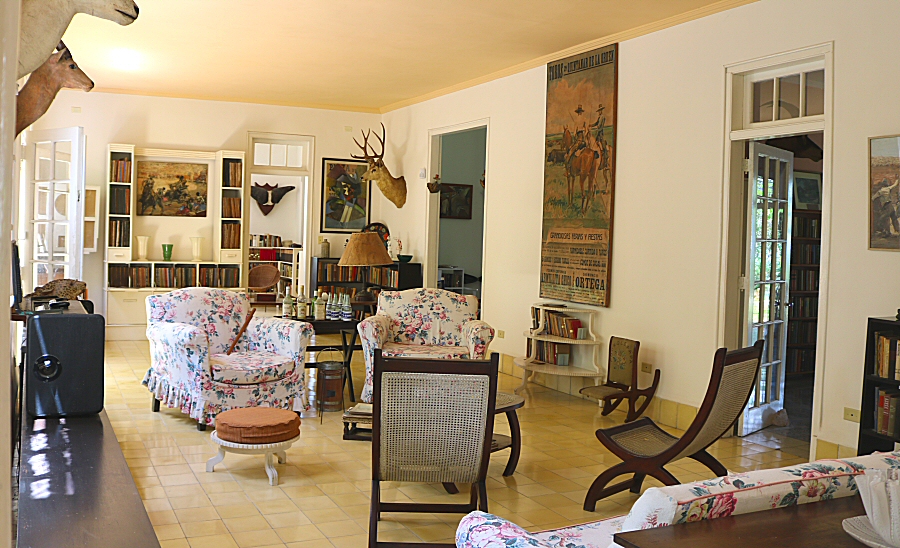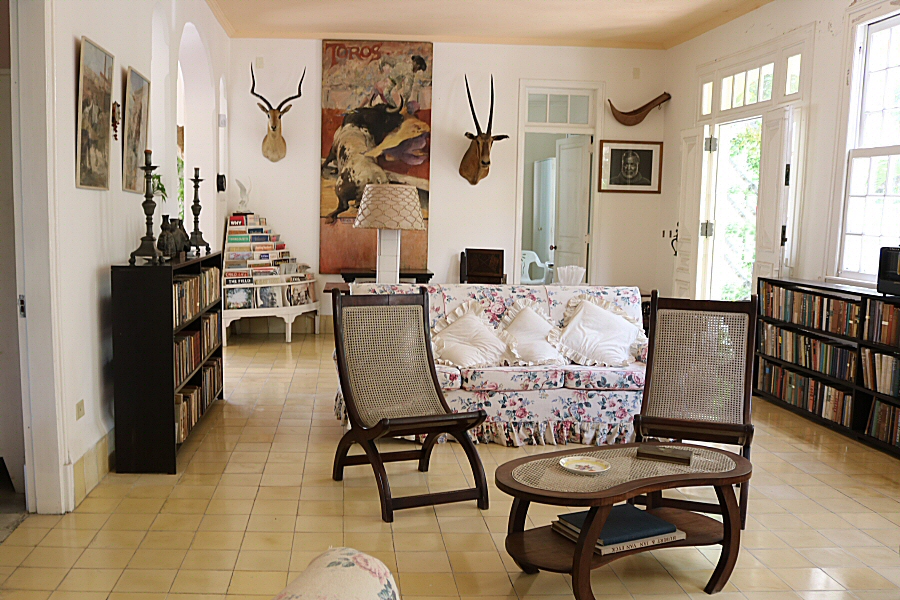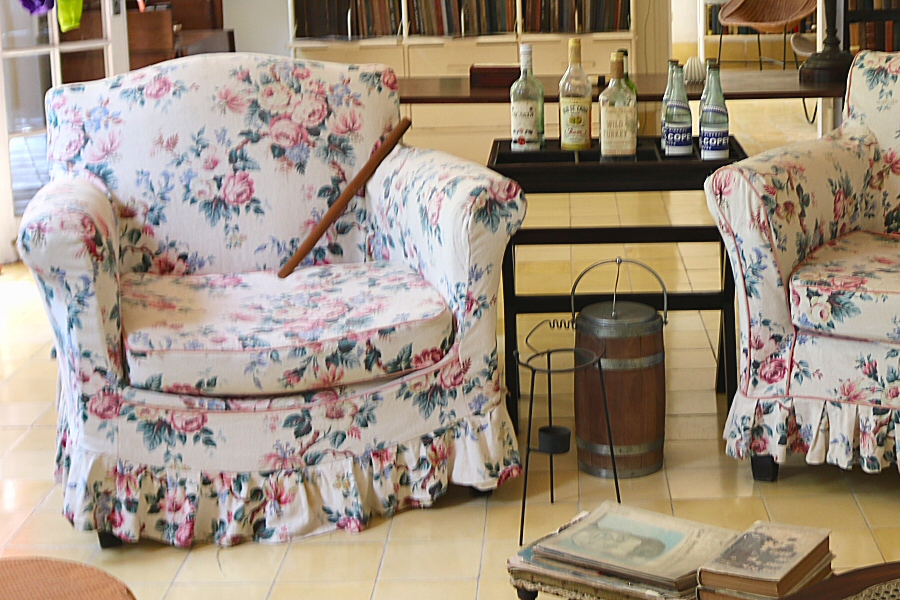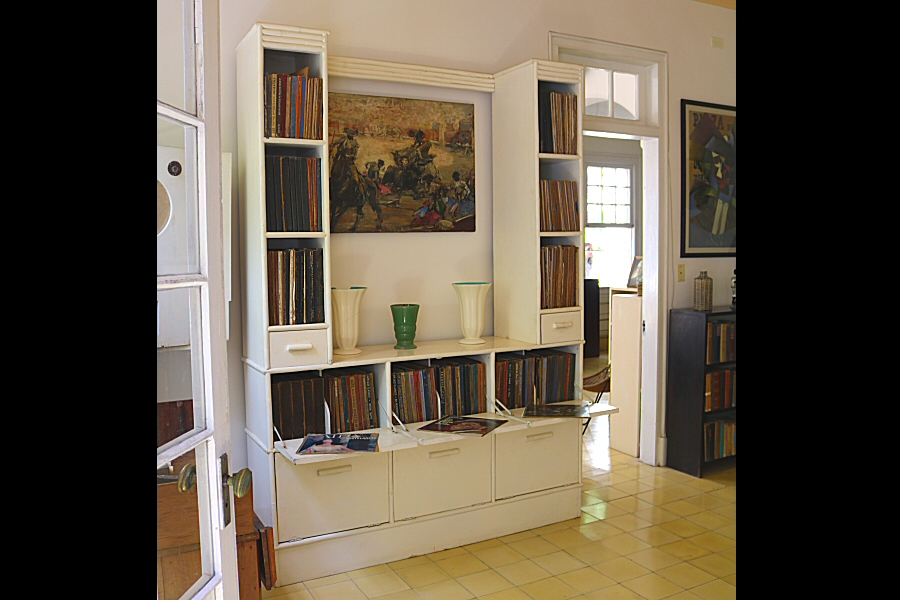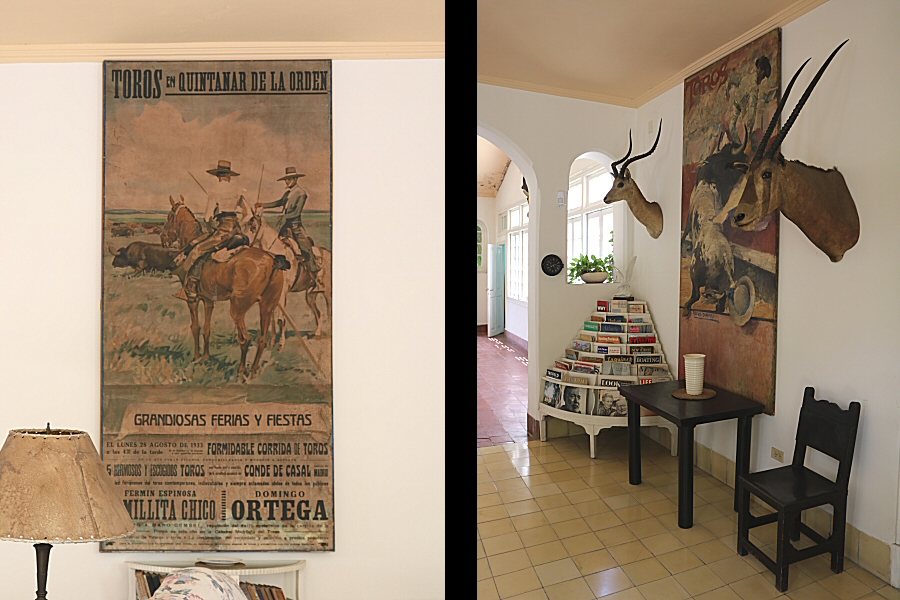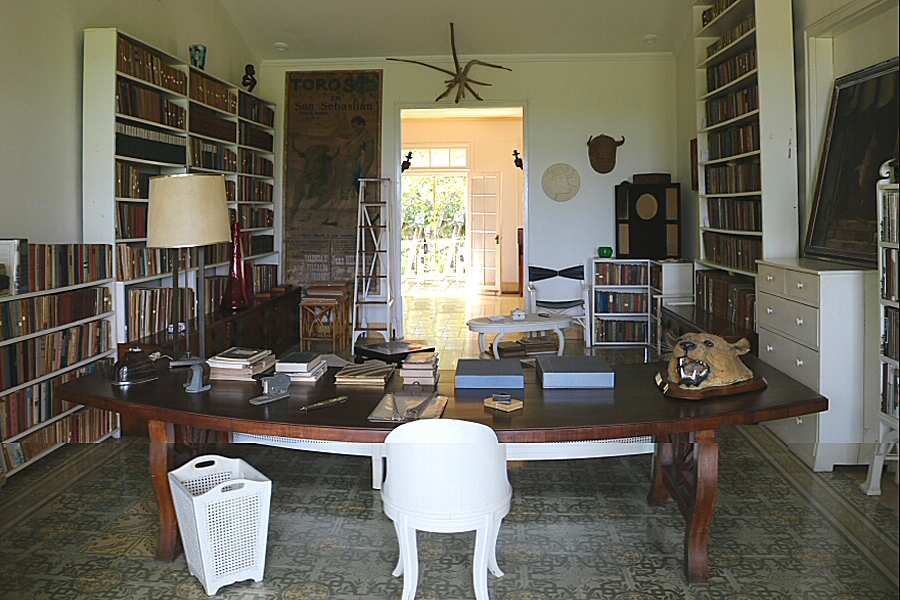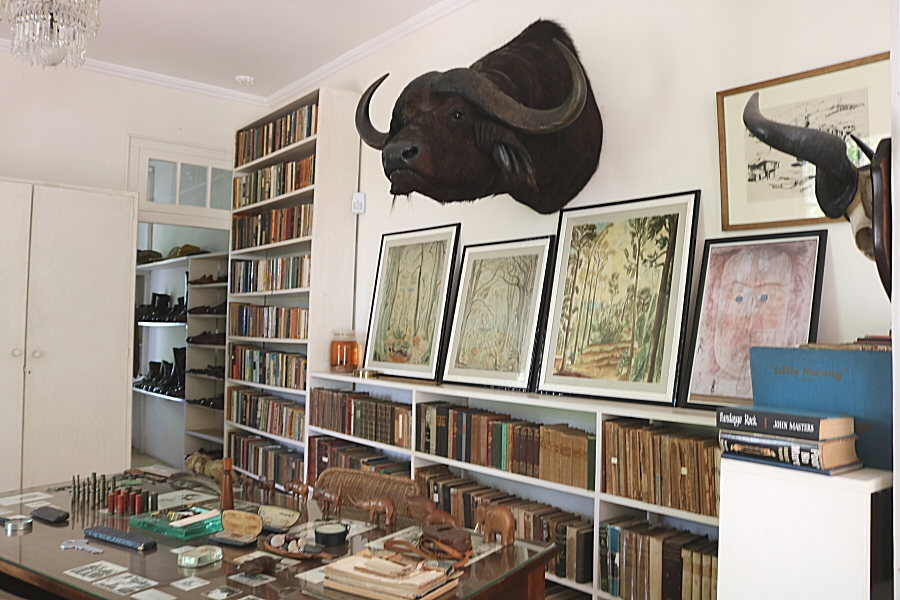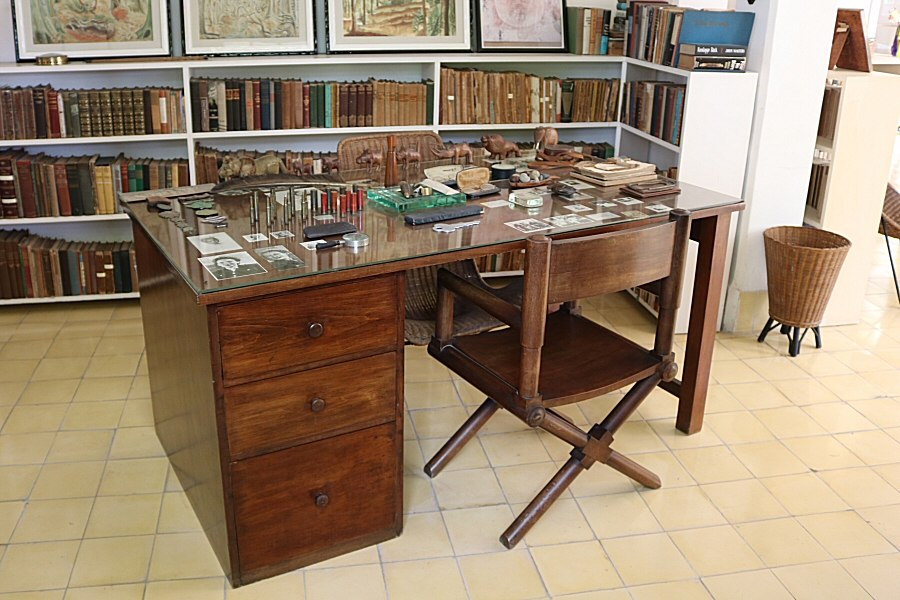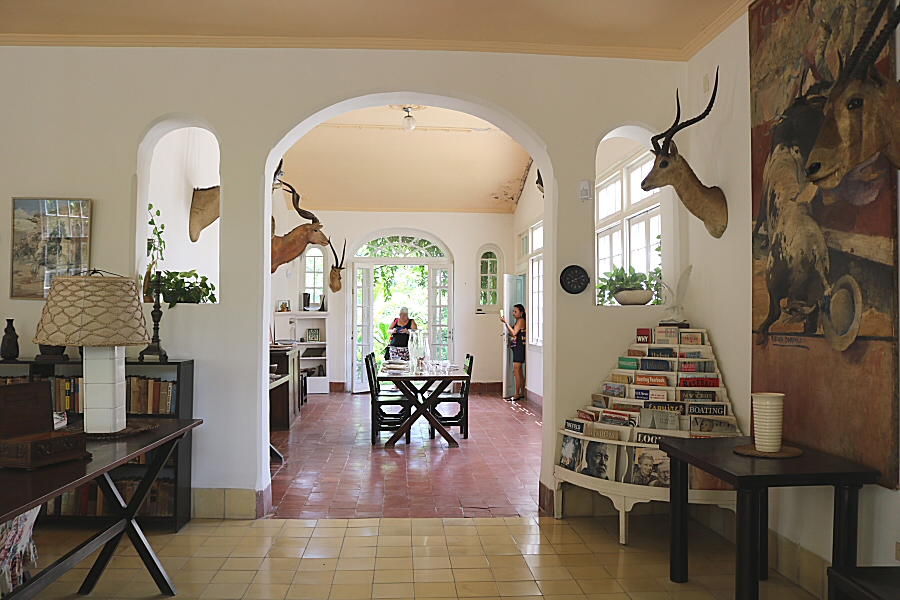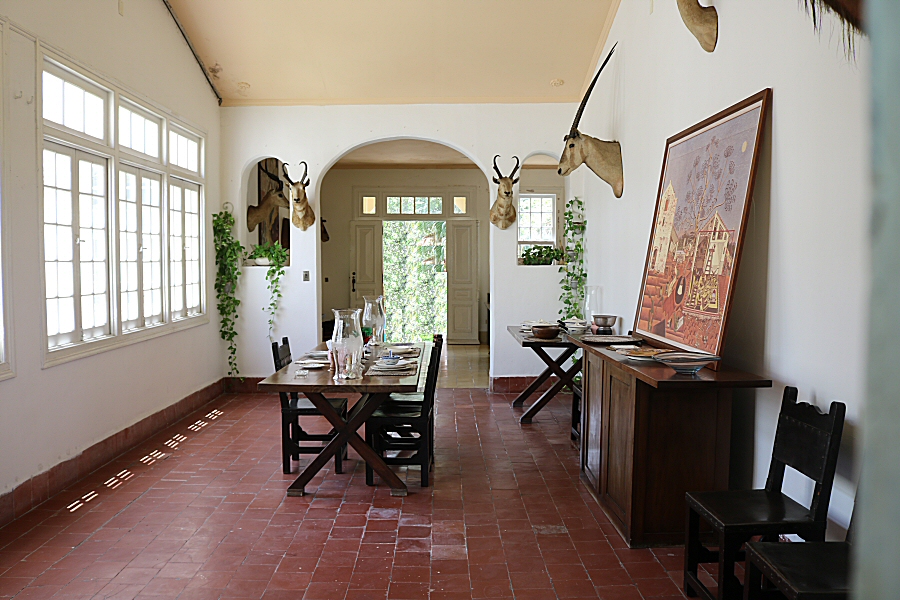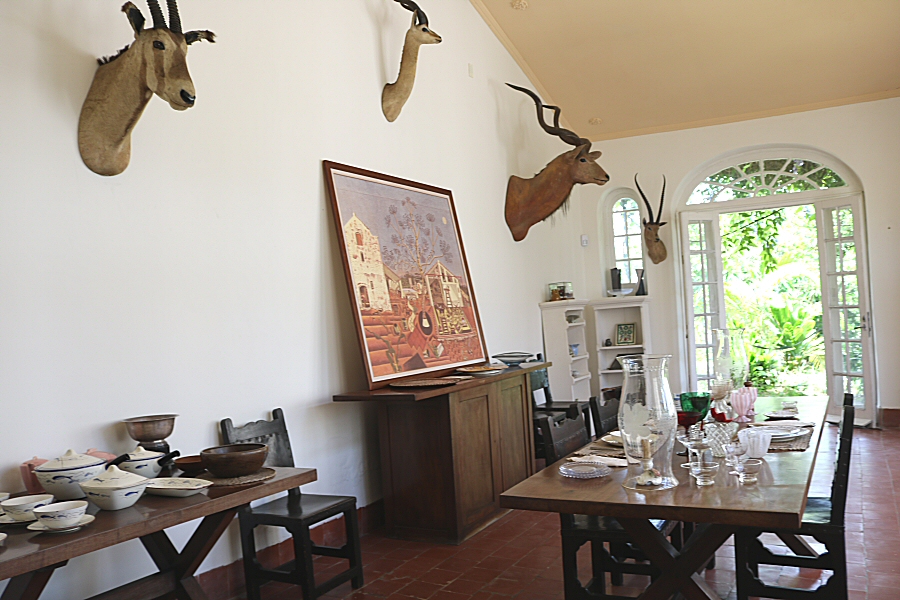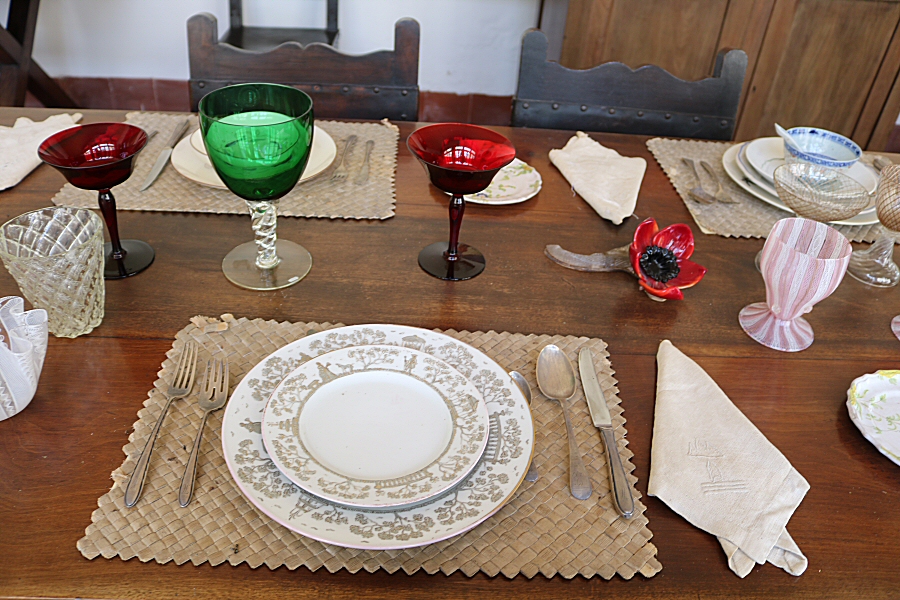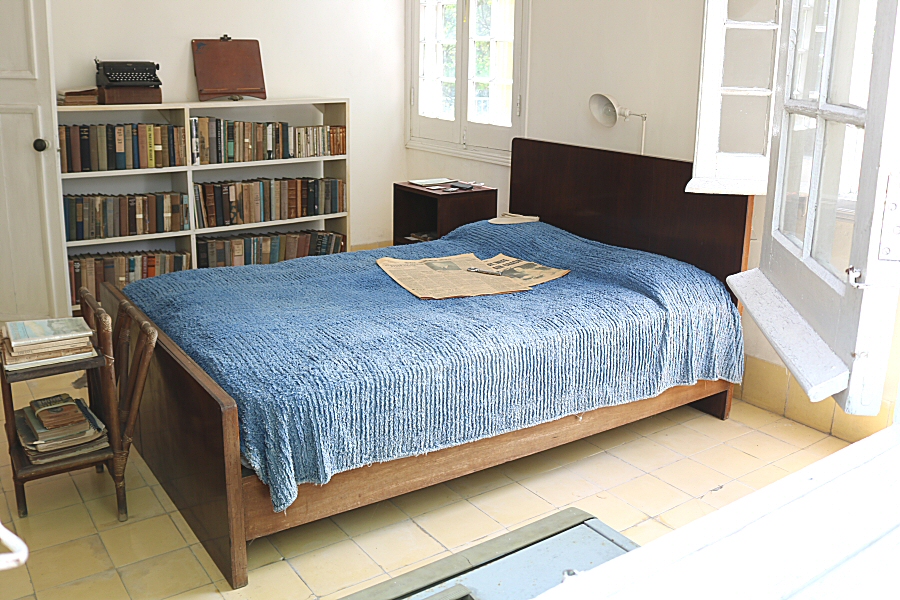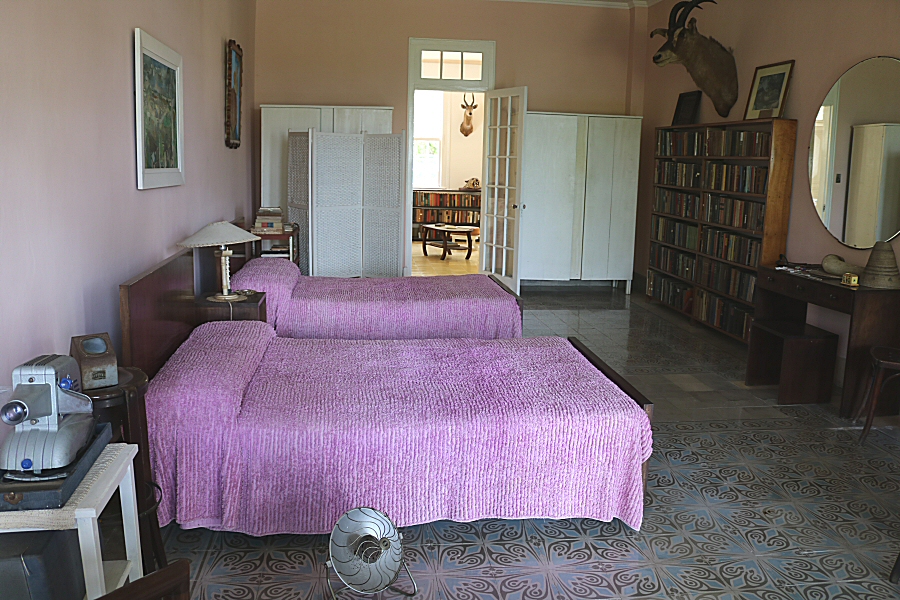
Finca Vigía is about 24 kilometers east
of Old Havana. The abundant tropical vegetation surrounds
the splendid place formed by the administrative office, the
house, the bungalow, the tower, the swimming pool and the
yacht. The farm with the house occupies an area of about
43.000 m2 today. It was about 61.000 m2, when Hemingway
bought it.
The flat-roofed one-storey house is
built on the crest of a mild rise. It has clean lines and
mullioned big windows. Stone steps lead up to the
neo-classical portico of the house that has pale-cream
stucco. The house is surrounded by a veranda with access to
all rooms. All the rooms are open and airy.
The spacious living room, which occupies
the largest area of the house, is furnished to the taste of
Mary Hemingway. It is esthetic, simple and practical. Much
of the furniture is made of dark, polished wood. The walls
have cream color. Pastel colors are dominating the room. But
the walls reflect the Hemingway style. Several hunting
trophies, almost all hunted by Hemingway during his safari
trips to Africa, are hung on the walls. They are mostly
antelopes, but the kudu’s head with twisted horns is
outstanding.
An oil painting with a bullfighting
scene adorns the wall: it is the work of the Spanish painter
Roberto Domingo. Opposite to it, there are also two
paintings reflecting the bullfighting. The painting on the
right with the title The Bullfighter is the work of the
Spanish painter and sculptor Juan Gris (José Victoriano
González-Pérez). You can see both the pictures of
Roberto Domingo and Juan Gris on the book jacket cover of
Hemingway’s novel Death In The Afternoon, published in 1932.
The circular frame in front of the painting of Juan Gris is
La Batea Mexicana (the Mexican Bat) that Hemingway bought on
one of his travels to Mexico. It is a species of done
handicraft of wood.
Next to the favorite chair of Hemingway
you can see some rum and soda bottles. The comfortable chair
belongs to a set of upholstered furniture, consisting of a
sofa and two chairs, covered in flowered chintz. There are
also some planters’ chairs with cane seats and slanting
backs in the living room
A cabinet full of musical plates and a
turntable with vacuum tubes that still work, show that music
was frequently listened in the house. The plate collection
consists of about 900 records of unforgettable songs, like
some jazz records such as Louis Armstrong, Cuban music such
as Rita Montaner, Bola de Neive, Ernesto Lecuna, Spanish
popular music and classical music.
The magazine rack at one corner is
another detail in the room. The floor is paved with soft
buff tiles.
The living room opens to the library
that was used initially as the guest room. Mary Hemingway
designed the room later, converting it into a library, when
every corner of the house became full of books. The shelves
of the large bookcases contain thousands of books and
magazines (about 9.000 pieces), placed irregularly, among
which you can find the complete works of Mark Twain and Honoré de Balzac, and other classics. In fact, in all rooms
you will find a wooden bookcase packed with books, which is
a constant feature of the house. The room has a long,
ostentatious desk, placed in its center. The curved desk is
made of dark polished wood. The room is spacious, in
contrast to the workroom.
The workroom of the house is preserved
as in the last days of Hemingway's stay. Ernest Hemingway
wrote everywhere in the house, even in bed. He preferred
mornings to write his novels, as he needed absolute silence.
The typewriter that he preferred to write directly and the
graphite pencil that he used when he preferred to write
first on a paper, are still there. There was always little
space on the desk for the typewriter. On the desk, you will
find a collection of objects of animals carved in wood,
brought from Africa for the Hemingways, the key of the city
of Matanzas that was delivered to Hemingway by the Cuban
poet Carilda Oliver Labra and several objects like flood
stones that Hemingway considered of good luck.
Several paintings are placed on the
upper shelf of the bookcase, among which the painting on the
right is the reproduction of the German painter Paul
Klee’s Monument in Arbeit (Monument Under Construction;
1929). The original was bought by
Hemingway in Berlin. On one of the walls you will see the
big black water buffalo head that he hunted in Tanzania
during his first safari in 1933. Its horns are rather
frightening. In his novel The Short Happy Life of Francis
Macomber, Hemingway describes the hunt of the water buffalo.
Next to the workroom, you will find a
small room that Hemingway used to store his moccasins, boots
and sandals.
On the opposite side of the workroom,
you will find Mary Welsh’s room with objects and books
mostly belonged to her.
The bright dining room has a rustic
furniture, manufactured by Francisco Castro. The walls are
adorned with trophies and a big oil painting. In the
cabinets you will find a collection of jugs of different
restaurants, as well as glassware with the emblem of Finca
Vigía (three hills representing those of Paris: Montmartre,
Montparnasse, St. Genenieve).
The bedroom is rather simple with a
wooden low bed. The spectacles of the writer are on the
bedside table. His Royal typewriter rests atop the bookcase.
Priorly, the guest room was reserved for
the cats, but Mary Hemingway changed it into a guestroom
that is also known a Venetian room.
In the bathroom, there is a bookcase and
a magazine rack with some publications, but the most
interesting detail is the penciled numbers on the wall:
Hemingway noted his weights daily.
